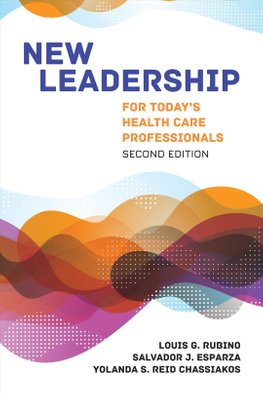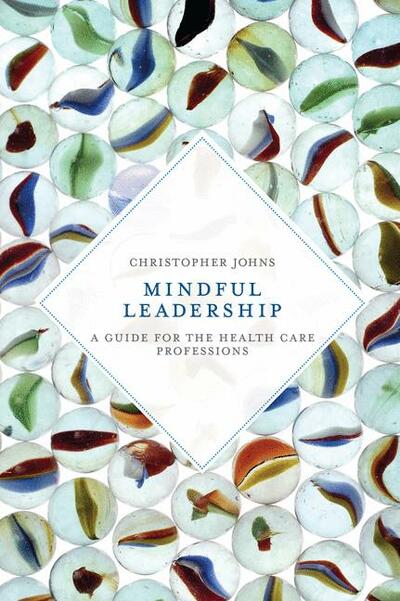WELCOME TO OUR POST FOR APRIL 2018
JOURNAL ARTICLES
A partnership to assess clinical nurse leadership skills
Nursing Management. 2018 Apr;49(4):40-47
Logrippo M1, Kelly S, Sardinas N, and Naft M.
Responsible Leadership: A Mapping of Extant Research and Future Directions
JBE Journal of Business Ethics Vol. 148, Iss. 1, (Mar 2018): 117-134.
Miska, C and Mendenhall, M E
The Perceived Impact of Leaders’ Humility on Team Effectiveness: an Empirical Study
JBE Journal of Business Ethics, Vol. 148, Iss. 1, (Mar 2018): 205-218.
AreRego A et al
Mindfulness and leadership flexibility
The Journal of Management Development; Vol. 37, Iss. 2, (2018): 165-177.
Developing the organisational culture in a healthcare setting
Published in Nursing Standard, 32 (21). pp. 53-63, but this link is to University of Central Lancashire research respository
Are CEOs making the grade as influencers on Twitter?: The strategic road to becoming a retweetable online leader
Strategic Direction, Vol. 34, Iss. 3, (2018): 1-3.
Providing feedback following Leadership WalkRounds is associated with better patient safety culture, higher employee engagement and lower burnout
BMJ Quality and Safety, Vol 27, issue 4, Published Online First: 09 Feb 2018.
Sexton JB et al
Excerpt from full text : “Leadership WRs are resource rich when they include appropriate follow-up actions to the issues surfaced using the leader’s position to make things happen at hierarchical levels above individual work settings. The term ‘work settings’ in this study describes work groups, including clinical units like emergency rooms, intensive care units and general medicine units, as well as non-clinical work groups like labs, patient safety, quality improvement and billing. Accordingly, providing feedback to the HCW about actions taken as a result of these WRs is essential to keep momentum and build trust in the collective ability to find, fix and report back the solutions to patient safety problems. For instance, following WR, work setting managers and patient safety officers keep track of planned initiatives at the work setting or departmental level as well as any updates, and communicate follow-up information back to HCW and senior leadership to supply accurate feedback and ensure completion of improvement tasks.
Unfortunately, when untrained leaders attempt to do WR, it can result in surfacing issues without addressing them or failing to feedback progress that has been made. Whacking the hornets’ nest in this way appears to be counterproductive to improving perceptions of patient safety. To measure the extent to which WRs are being done well, the presence of WR with feedback can be assessed as a brief item on a safety culture or engagement survey. Indeed, researchers have demonstrated that a simple metric to assess WR impact is the extent to which staff report having personally received feedback about actions taken to reduce patient safety risks as a result of WR in their work setting.”
Practicing leadership-as-practice in content and manner
Leadership, epub ahead of print , Lancaster University Dept for Leadership and Management
Raelin, J., Kempster, S.J., Youngs, H., Caroll, B., Jackson, B. 1/02/2018 In: Leadership.
Abstract from webpage: ” A collective and collaborative response to an article appearing in Leadership’s “Leading Questions” department is prepared by a team subscribing to the leadership-as-practice approach. The focus is to represent the manner in which leadership-as-practice operates as a leadership theory and in its communal practice orientation. Among the themes addressed are leadership-as-practice’s theory development, its contribution in comparison to critical leadership theory, its approach to power, and its practicality. Emerging issues in leadership-as-practice theory and application are also reviewed.”
Moves to increase diversity and inclusion in the workplace: Fairness and camaraderie as building blocks
Human Resource Management International Digest, Vol. 26 Issue: 2, pp.41-43
Self-Awareness and Cultural Identity as an Effort to Reduce Bias in Medicine
J Racial Ethn Health Disparities. 2018 Feb;5(1):34-49
White A A et al
Excerpt from PuMed abstract: ” In this article, the authors describe the formation and implementation of a novel medical school course on self-awareness and cultural identity designed to reduce unconscious bias in medicine. Finally, we discuss our observations and lessons learned after more than 10 years of experience teaching the course [at Harvard Medical School] “.
The article has 110 references in its bibliography.
Nurses’ leadership self-efficacy, motivation, and career aspirations
Leadership in Health Services, Vol 31, issue 1, p 47-61
Cziraki K, Read E, Spence Laschinger H K , Wong C
Research paper, Canadian data
Excerpt from abstract: “Skill development opportunities , temporary management roles and informal mentoring were significantly related to nurses’ leadership self-efficacy, which significantly influenced motivation to lead and leadership career aspirations . Motivation to lead was significantly related to leadership career aspirations.”
Goleman’s Leadership styles at different hierarchical levels in medical education
BMC Med Educ. 2017 Sep 19;17(1):169.
Saxena A et al
The PubMed page links through to the freely available PDF .
Excerpt from PubMed abstract: ” Results: There were differences in the repertoire and preferred styles at different leadership levels. As a group, first-level leaders preferred democratic, middle-level used coaching while the senior leaders did not have one preferred style and used multiple styles. Women and men preferred democratic and coaching styles respectively.
The varied use of styles reflected leadership conceptualizations, leader accountabilities, contextual adaptations, the situation and its evolution, leaders‘ awareness of how they themselves were situated, and personal preferences and discomfort with styles. The not uncommon use of pace-setting and commanding styles by senior leaders, who were interviewed, was linked to working with physicians and delivering quickly on outcomes.”
………..interesting BLOG POSTS
Using Gender Neutral Language in Your Papers -Posted 23 March 2018
Some great tips here which are simple and easy to adopt in your report and other writing at work .
Posted by The EasyBib Writing Center
The post gives citations including : Davis, A E L. “Gender Neutral Language In Statutory,  Official and Legal Documents.” Fawcett Society, 3 August 2017.
Official and Legal Documents.” Fawcett Society, 3 August 2017.
REPORTS
Rewiring leadership; The future we want, the leadership we need
University of Cambridge, Institute for Sustainability Leadership
Published Feb 2018
Gender pay report , NHS England
Published: 28 March 2018
This report provides details of NHS England’s gender pay gap under the requirements of the Equality Act 2010 Act (Gender Pay Gap Regulations) 2017 .
NHS England has a predominantly female workforce , however women are under-represented at the National Clinical Director level (3 at National Clinical Director level and 5 at Associate National Clinical Director level). NHS England will review how
they can attract more women into this role.
Coaching and mentoring are highlighted as a specific need.
Also a women’s staff network , in partnership with other NHS England staff networks, will
assist in the shaping and delivery of their gender pay gap projects
Nurse leaders make a difference
Link to pdf of research report by the King’s Fund
Excerpt from NHS England webpage: Michael West, Senior Visiting Fellow at The King’s Fund, said “The findings complement a consistent pattern of results demonstrating that supporting staff and creating positive work environments through compassionate and collective leadership is good for staff, vital for patient care and key also to good financial performance in the NHS.” “The new analysis concludes that the effect size was substantial – a one standard deviation increase in overall staff engagement is associated with a £1.7 million saving on agency staff costs for the average trust.”
BOOKS
NEW BOOKS from SAGE PUBLISHING
Cases in Leadership, Fifth Edition by Rowe, G and Guerrero L
Published: May 2018
Companion site : https://study.sagepub.com/rowe5e (need to register and then login)
Leadership Theory and Practice, Eighth Edition (International Student Edition)
Northouse, P G
Published: April 2018
Student Study Site –https://edge.sagepub.com/northouse8e
“The SAGE edge site for Leadership by Peter G. Northouse offers a robust online environment you can access anytime, anywhere, and features an impressive array of free tools and resources to keep you on the cutting edge of your learning experience.”
Building Leadership Character
Newman, A
Forthcoming, to be published: June 2018
Instructor Teaching Site
Gender in Communication A Critical Introduction, Third Edition
Palczewski CH , Pruin DeFrancisco V and McGeough D D
Published: March 2018
GENERATION X , GENERATION Y (Millennials) and now GENERATION Z
What can we glean about workforce planning and leadership?
Definitions explained on a BBC website here
Generation X – aged mid to late 30s to late 50s (ie those born between the early 1960s and the early 1980s,
Generation Y (also known as Millennials) – aged 17 or 18 years of age through to mid 30s (ie those born between about 1980 and 2000
Generation Z – – aged 17 and 18 ( ie those born since 2000)
Development and retention of Generation Y employees: a conceptual framework
Naim, M F and Lenka U
Employee Relations; Vol. 40, Iss. 2, (2018): 433-455.
Futureproofing our NHS: A generational shift
March 2018
Student-led Health Commission is to employ a group of students and recent alumni from across the different Faculties at King’s College London to gain insights from young people on how the NHS can better deliver for the future. The aim is to train and develop the next generation of health and social care leaders. By guiding the commissioners on how to do policy analysis and explaining the life cycle of a policy, we hope to build engaged leaders for tomorrow. Over the autumn of 2017, they conducted research and held ‘policy labs’ to develop our ideas, which culminated in this final report of our findings and recommendations. On Friday 16 March 2018, we hosted an ‘unconference’, to share and build on our ideas with a range of participants, including senior NHS leadership.
Dream Placement
Dream Placement, organised annually by the Centre for Leadership Performance, sees public and private sector organisations across Cumbria offering students placements to learn more about leadership and future careers in the area. The placements are highly competitive with almost 200 applicants in total and, of these, 90 were interested in health careers. Jean Hill, learning and development manager at NCUH, commented: “Dream placement offers so much more than the usual work experience. Shadowing clinical teams is great for the students but what makes this different is the focus on developing leadership skills that will help them stand out from the crowd when they apply to study or for a job.”
Publications from the Center for Health Workforce Studies, University of Washington here
Occupational Mobility among Individuals in Entry‐level Healthcare Jobs in the United States
Snyder CR, Dahal A, Frogner BK
Journal of Advanced Nursing, March 2018

The Health Care Job Engine: Where Do They Come From and What Do They Say About Our Future?
Medical Care Research and Review Vol. 75, Iss. 2, (Jan 2017): 219-231
Frogner, BK
Also:
Health Careers Pipeline and Diversity Programs 
This initiative increases the diversity of the United States’s health professions workforce and to offer high quality, culturally-competent care within underserved communities.
2016-2017 academic year accomplishment snapshot: Health Careers Pipeline and Diversity Programs (PDF – 91 KB)
TALENT MANAGEMENT
The King’s Fund: Closing the gap on BME representation in NHS leadership: not rocket science 
March 2018
The King’s Fund recently hosted a seminar, in partnership with NHS England, looking at London WRES data with senior leaders.
Emerald Publishing RealWorldResearch> –
The latest research from our authors on how to lead with a vision
Leadership mistakes you don’t want to make
Most of the time leadership is understood by understanding what makes successful leaders ‘good’. However, what if we look at the ‘dark side’ of leadership and explore what it is exactly that defines an unethical leader?
What makes a superboss super?
“In this Q&A contributing editor of our Strategy & Leadership journal Brian Leavy, asks leadership guru Prof Finkelstein what it is exactly that makes a superboss ‘super’ and finds out why it really is all about the people when it comes to leadership success.”
The great man theory of leadership
Podcast – “delve into the “Great Man Theory” and pick apart the major flaws in the idea that leadership is instinctive and a solo accomplishment.”
A selection of most read papers from the journal Leadership in Health Services in the last year
- A study of relationship between managers’ leadership style and employees’ job satisfaction
Apr 2013, Volume: 19, Issue: 2, pp. 11-28
-
Nov 2014 , Volume: 27, Issue: 4, pp. 283-298
-
Jan 2016, Volume: 29, Issue: 1, pp. 95-110
-
Sep 2015 , Volume: 28, Issue: 4, pp. 332-344
PDF freely available
here
-
Assess your leadership skills tool
American Organization of Nurse Executives
Requires simple registration on the website
Sample report
The AONE Nurse Leader Competency Assessment Tool is a powerful self-development instrument. Through the assessment you can evaluate your skills, knowledge and abilities for the nurse manager and nurse executive roles. The simple exercise of rating yourself and asking others to rate you provides tremendous insight on hidden strengths, blind spots and areas for development.
After completing the assessment, you will receive a pdf report that scores leadership domains and individual competencies, categorizes your highest and lowest rated items and shows variations between your supervisor’s and your self-assessment.
The assessment and standard report are available to all nurse leaders
Other news
Embedding of a talent management programme at Lancashire Teaching Hospitals NHS Foundation Trust
1/4/2018
Excerpt: “The project has involved creation and embedding of a talent management programme which provides a workplace that fosters ongoing development for all staff, identifies individual strengths and areas for development; retaining talent and enhancing staff satisfaction. Implementation of this strategy included the launch of talent management tools, workshops and materials for all managers which would help them to support their staff, a career MOT programme for those identified as “rising stars”, in addition to individualised coaching sessions. Mandy Davis, Blended Learning Manager at Lancashire Teaching Hospitals is the lead for the talent management programme. “We are one of the only NHS organisations in the North West to offer such a programme for our staff, and have been approached by other organisations to learn about what we have done.” Following attendance on the programme, 30% of participants surveyed have taken up more senior positions. Additionally, 70% said that they had taken on additional responsibilities since attending and 50% said they had experienced development opportunities that they hadn’t previously.”
Suzie Bailey appointed Director of Leadership and Organisational Development at The King’s Fund from JULY 2018
Suzie will build on the work of outgoing director Marcus Powell in developing The King’s Fund’s leadership and organisational development work to support health and care organisations. She will move from being Director of Leadership and Quality Improvement at NHS Improvement to The King’s Fund.
![]()
![]()
![]()
![]()
![]()
![]()
![]()
![]()
![]()
![]()
![]()
![]()
![]()
![]()
![]()
![]()


 ased on “interviews with senior leaders in health and local government on what is really happening as managers grapple with the Sustainability and Transformation Plan (STP) process” and ” analyses the difficulties these new, highly pressured networks are experiencing, and identifies how healthcare managers need to think and act differently to make systems leadership a success”
ased on “interviews with senior leaders in health and local government on what is really happening as managers grapple with the Sustainability and Transformation Plan (STP) process” and ” analyses the difficulties these new, highly pressured networks are experiencing, and identifies how healthcare managers need to think and act differently to make systems leadership a success”


